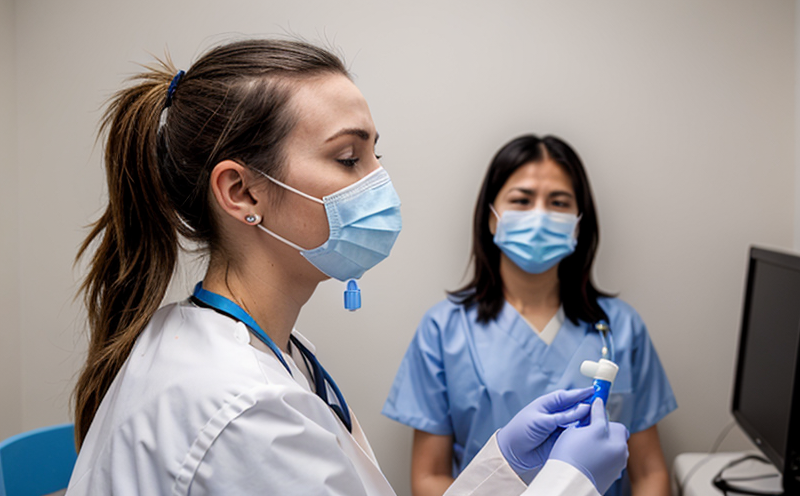Serological Respiratory Testing in Veterinary Herd Health
Respiratory diseases are a significant concern in veterinary herd health, as they can lead to substantial economic losses through reduced productivity and increased treatment costs. Serological testing plays an essential role in the early detection of respiratory pathogens within livestock populations. This form of diagnostic testing identifies antibodies produced by the host immune system in response to specific infectious agents, thereby providing valuable information about past or current infections without requiring invasive sampling methods.
The process involves collecting serum samples from individual animals and analyzing them for the presence of antibodies against particular viruses or bacteria known to cause respiratory illnesses. By monitoring antibody levels over time, veterinarians can assess herd immunity status and identify potential risk factors associated with outbreaks. This non-invasive approach offers a cost-effective alternative compared to other diagnostic techniques such as bronchoalveolar lavage (BAL) or post-mortem examinations.
Accurate serological testing requires careful sample collection procedures to ensure representative samples are obtained from the intended animal group. Factors influencing test accuracy include proper handling of blood specimens, appropriate storage conditions, and timely transport to the laboratory for analysis. Additionally, laboratory personnel must adhere strictly to standard operating procedures (SOPs) when processing these samples.
One key advantage of serological testing is its ability to provide herd-level insights into pathogen prevalence without causing stress or harm to the animals involved. This non-invasive nature makes it particularly suitable for large-scale monitoring programs aimed at preventing and controlling respiratory diseases within livestock herds. Furthermore, by identifying carriers early on, farmers can implement targeted interventions such as quarantine measures or vaccination campaigns more effectively.
However, interpretation of serological results should be done cautiously since they may not always reflect current infection status due to the lag between exposure and antibody production. Therefore, combining serology with other diagnostic tools like molecular testing provides a comprehensive picture of disease dynamics within the herd. In some cases, repeated sampling at intervals throughout the year can help track changes in immunity over time.
Compliance with relevant international standards ensures consistent quality across different laboratories performing similar tests. For instance, ISO 15189 specifies requirements for proficiency testing programs used to evaluate laboratory performance; adherence to such guidelines helps maintain high standards of accuracy and reliability in serological respiratory testing.
Environmental and Sustainability Contributions
- Reduces the need for invasive sampling techniques that could stress animals, thereby promoting animal welfare.
- Promotes efficient use of resources by enabling targeted interventions based on herd-wide data rather than individual assessments.
- Decreases carbon footprint associated with frequent transport and handling of live animals during routine health checks.
Competitive Advantage and Market Impact
Serological respiratory testing offers several competitive advantages in the veterinary herd health market. Firstly, it allows for early detection of respiratory pathogens, which can help prevent outbreaks before they become widespread within a herd. Secondly, this non-invasive method provides valuable insights into herd immunity levels, enabling proactive management strategies that minimize economic impacts from disease events. Lastly, compliance with international standards enhances credibility among clients seeking reliable diagnostic solutions.
The adoption of serological testing has significant implications for the broader livestock industry by fostering better animal health practices and promoting sustainable farming methods. As awareness grows about the benefits of this approach, more farmers are likely to incorporate it into their routine monitoring protocols, driving demand for advanced laboratory services capable of delivering accurate results promptly.
Use Cases and Application Examples
| Use Case | Description |
|---|---|
| Disease Surveillance | Monitoring respiratory pathogen prevalence across a herd to identify emerging risks. |
| Vaccination Monitoring | Evaluating the effectiveness of vaccination programs by assessing antibody responses in vaccinated animals. |
| Outbreak Response | Determining if an outbreak is due to new or endemic pathogens, informing appropriate control measures. |
| Carriage Detection | Identifying asymptomatic carriers of respiratory viruses or bacteria that could spread disease within the herd. |





